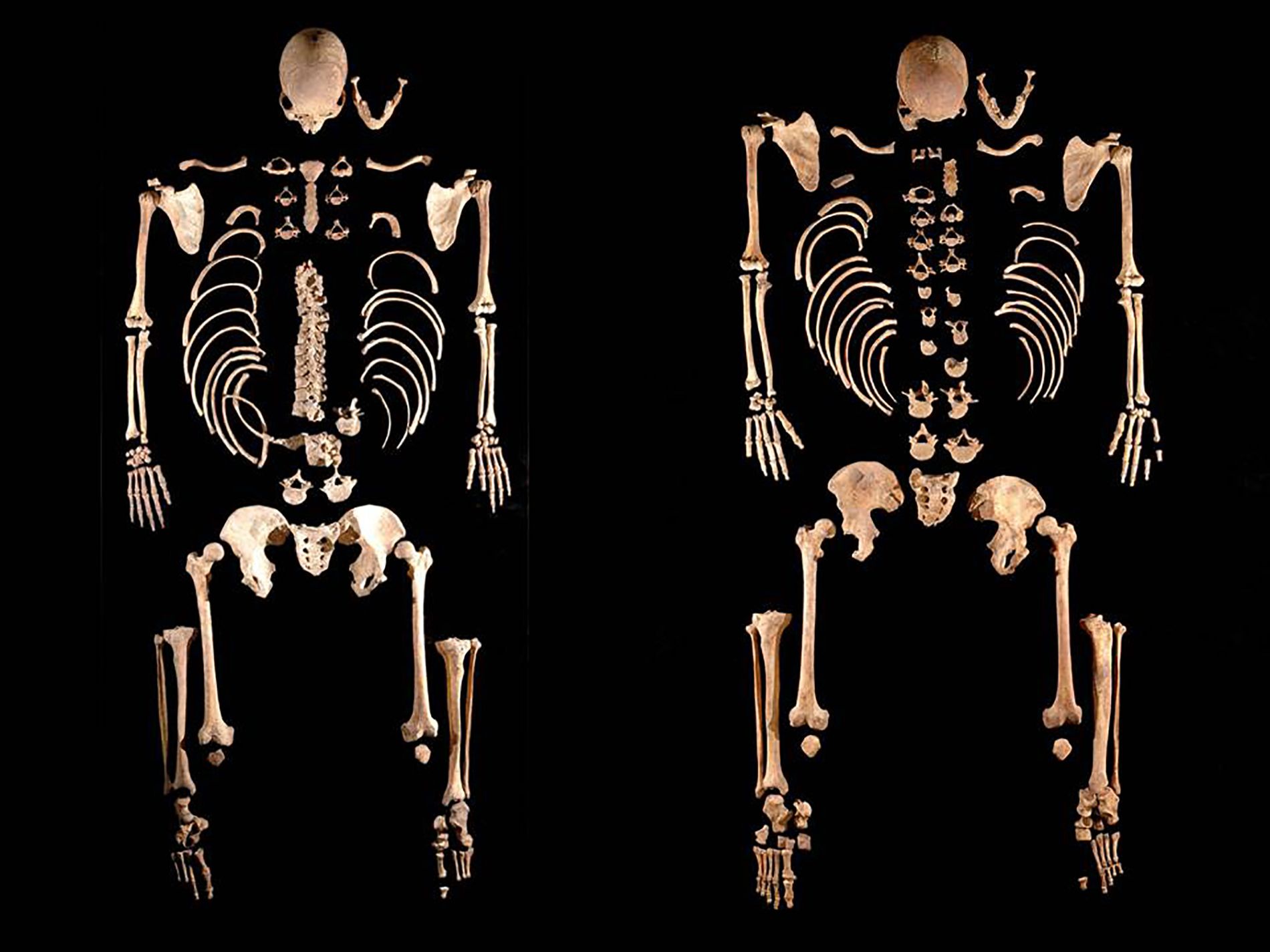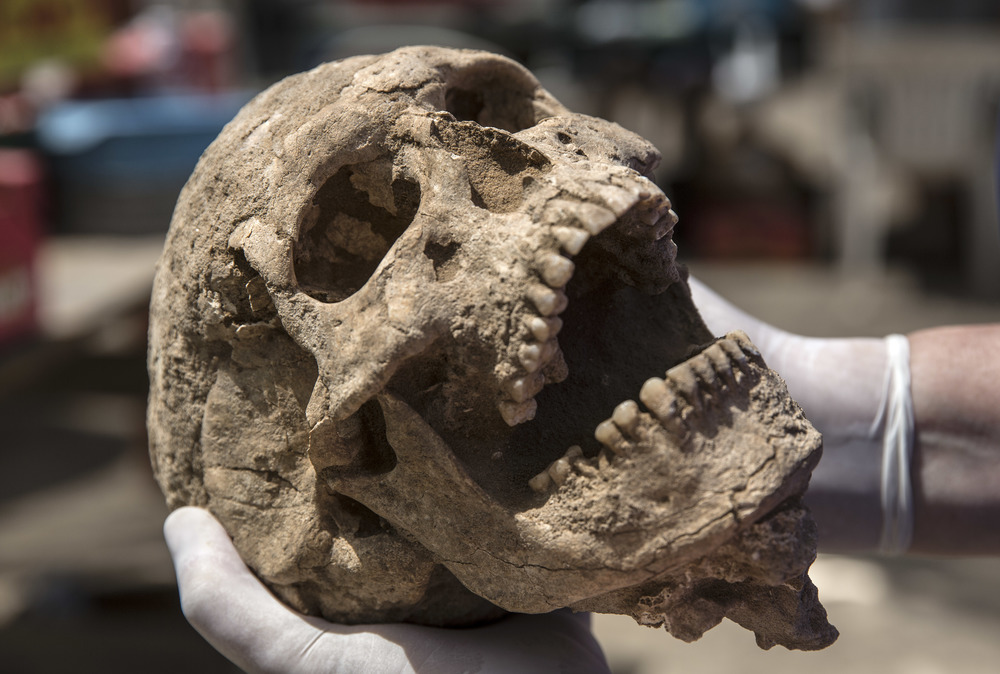The one here was replaced by a migration of men about 3,000 years ago
- Our main genetic information comes from the Iron Age. A migration process of 4,500 years ago would forever change the history of the Iberian Peninsula. For unknown reasons, the new emigrants from the north were imposed on the peninsulars and along with the local women began a new tribe. I believe that the Basques of today are the result of this mix.

This is confirmed by Iñigo Olalde, a visiting scientist who for three years has led the largest and most profound genetic study of the population of the Iberian Peninsula. The work team reports the changes that have occurred in the last 8,000 years, accompanied by the most advanced technologies for decryption of old DNA, in the laboratories of researcher David Reich of Harvard University (USA). To find the trace of the Basque Country, Iñigo told us, it is useless to use genetics.
How is it possible to recover genetic information from our ancestors?
I'm talking about this issue normally, but when I started in the field of genetics, it became absolutely incredible to me, for example, to get the DNA of a human being who lived 5,000 or 6,000 years ago. Techniques are accelerating enormously. I started the thesis in 2012, and in the first project, I studied a single human being, and I was surprised that I did. We're now studying 300 people. New technologies make it possible to investigate the remains of the past more quickly and accurately, distinguishing between samples which are endogenous and which are contaminated. The results obtained are very reliable, as the contaminated samples have been left out.
What's behind the acronym R1b-M269?Men have
the Y chromosome, and parents pass it directly to their children, without confundirnos.Otros chromosomes, like 1, mixing from generation to generation. With chromosome Y doesn't happen, and it's easier to draw the genetic lineage of humans, because it has very few changes. With these changes, we classify the different genetic lineages. We call R1b-M269 a genetic lineage of the Y chromosome from the Russian steppe in the High Bronze.
How important are these acronyms when explaining the peninsular past?
As for the samples of modern population, we knew that the R1b-M269 lineage is the most widespread in the Iberian Peninsula. Between 50 and 60% of men have this strain, and in the Basque Country, even more so, 80% of men have it. It's important because it gives us the key to knowing when that tribe came in. The new population arrived about 4,500-4,000 years ago, and currently all men who have that genetic strain are descendants of them. So far it was not so clear. What we have shown is that this new dynasty did not exist since Mesolithic or earlier times.
Where did the migration come from?Its
origin goes back to an area known as Estepa Pontica, the Russian steppe located between the Black Sea and the Caspian Sea. It was 5,000 years ago that he was taken out of there and headed west. They first went east of Europe, then central of Europe, and they joined the local population. However, they did not settle in these places and continued to spread until they were established throughout Europe. When they arrived on the Iberian Peninsula, they no longer had the same genetic or cultural characteristics as the inhabitants originating from the steppe. However, genes showed some peculiar features of Russian steppe, isolated for centuries, which were strange among the inhabitants of the Iberian Peninsula.
Are there any evidence that they entered the peninsula by force?
We know that the clans who came from the outside represented in a short time the tribes of the men here. With genetic data, we cannot deduce how the implantation was. The simplest hypothesis is that the clans who came from the outside ended the men from here and multiplied with the women from here. Our data does not accept or deny the idea of violence, but it does make it valid. Archaeologists, on the other hand, have not been the proponents of this hypothesis, as there have been no signs of general violence in the fields. They say it can be the result of a stratified society. The clans who came from outside had a higher status, were richer and, ultimately, were more likely to reproduce. Their children would receive that status by the way, they would reproduce it, and this stretch, coming from outside the century, would almost completely erase that of the men here.
And did you keep track of women's genetic information?
Yes. It's a mitochondrial DNA that mothers pass on to their children. This genetic information is also received by men, but we do not pass it on to our children. What we see is that there were no big changes in these tribes of mothers. So we've deduced that the men who came from the outside mixed up with the women here.
Before esteemed men came from central Europe to our country, were there genetic differences between the inhabitants of the Basque Country and other countries of the Iberian Peninsula?
No. In the Neolithic era, the groups inhabiting the Iberian Peninsula were genetically similar.
And after the confusion you mentioned, what genetic changes did the Basques know?
If we jump to the Iron Age, the CC. In 1500 we see that the Basques of then and those of now are genetically very similar. However, the other groups in the Iberian Peninsula mixed with other cultures (Roman, Muslim, Visigodes...) that have been reflected in the genes. The differences between the Basques and the inhabitants of the Iberian Peninsula date back to the last 2,000 years, no more.
Some experts affirm that it was the groups extracted from the steppe that disseminated the Indo-European language.
Genes don't have language. We can't explore the language of our ancestors through genes. The data collected opens a way of research for linguists, who provide new elements in the debate on languages, as they demonstrate that this migration was the one that took place. There is a thesis that argues that this migration brought with it Indo-European languages, and that perhaps it was not able to change the languages of all places, and here we can include the Basque or the Iberian. But at the moment they are only hypotheses.
What do you think of the repercussions that your research has had on us?
It struck me. In other well-known journals, we have published this type of research and have not had that echo. Our data has touched feelings of identity. It may be a blow to those who thought that the Basques have been here for the past 10,000 years, as our investigations have drawn other conclusions.
Henrietta Lacks izeneko andrea umetoki minbizi batek jota hil egin zen 1951an, baina bere gorputzetik eta bere baimenik eta jakintzarik gabe erauzitako zelulek oraindik, egundaino bizirik eta ugaltzen diraute, eta azken hamarkadetako biologia eta medikuntza ikerketetan... [+]


















